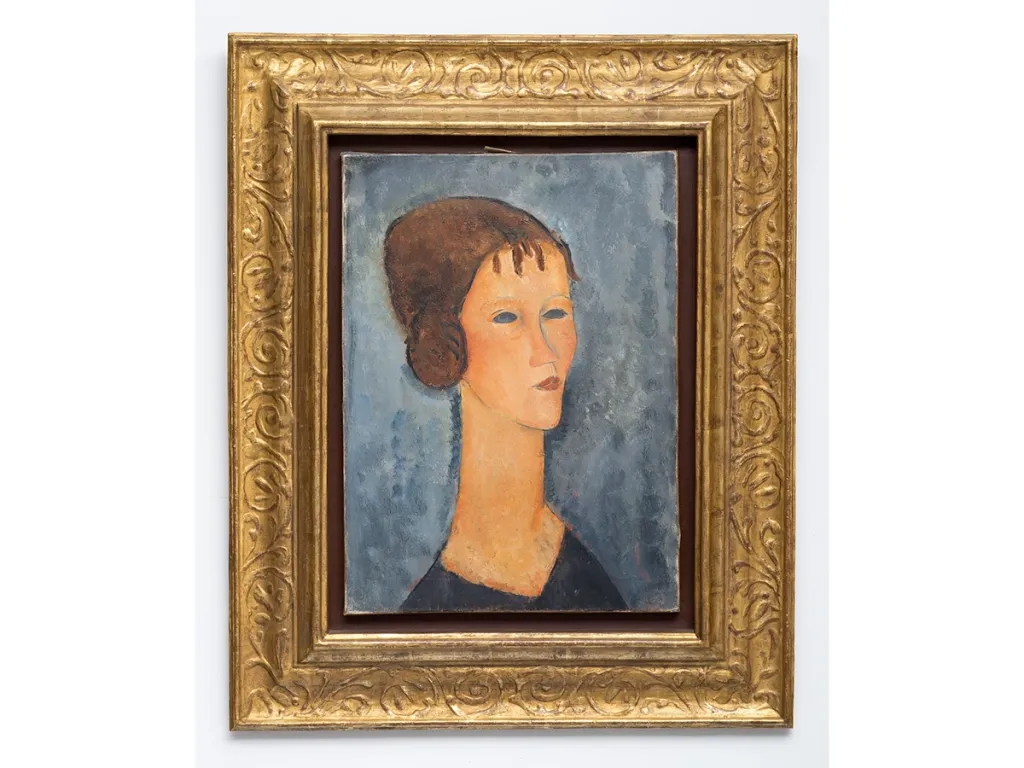On Tuesday, mega-gallery Pace announced the highlights for its presentation at Art Basel Paris later this month. Among the works on offer is a major painting by Amedeo Modigliani: his widely exhibited 1918 canvas Jeune fille aux macarons (Young Woman with Hair in Side Buns).
The inclusion of the Modigliani, which Pace said is priced around $10 million, is more than a nod to the Italian artist’s ties to Paris, where he lived for much of his life and is buried in Père Lachaise Cemetery. It also serves as a preview of a newly formalized partnership between the gallery and the Institut Restellini, which are collaborating on a forthcoming Modigliani catalogue raisonné set to be published in March. Pace will host a series of symposia in New York in 2026 and an exhibition on the artist in 2027, per a press release.
“Marc Restellini’s Modigliani catalogue raisonné is not only the definitive publication on the artist—it is also setting a new standard for all catalogues raisonnés,” Pace CEO Marc Glimcher said in a statement. “His groundbreaking methodology and pioneering use of science and technology as part of this decades-long project involving dozens of experts around the world has led to the authentication of a total of 424 works by the artist, many of which we are thrilled to exhibit at our New York gallery in 2027.”
The forthcoming volume—authored by Modigliani scholar Marc Restellini and distributed by Yale University Press—has been decades in the making. Restellini began work on the project in 1985. For much of that time, his painstaking research, which included persuading cautious collectors to subject their purported Modiglianis to scientific testing and infrared photography, was funded by the Wildenstein Institute, a Paris-based research center run by the Wildenstein family, the long-time art dealers who for nearly 20 years were partners in PaceWildenstein.
After the death of patriarch Daniel Wildenstein, his son Guy told Restellini that the institute would no longer support his research, according to a 2020 copyright lawsuit filed by Restellini and reported by The New York Times at the time. The Wildenstein Institute wound down operations and later transferred its archives to a new nonprofit, the Wildenstein Plattner Institute, dedicated to digitizing catalogues raisonnés and other important art-historical documents. In 2020, Restellini sued the Wildenstein Plattner Institute to block it from publishing materials he had produced for the Modigliani project. The two parties reached a settlement in May, according to public court documents.
The release of Restellini’s long-awaited catalogue raisonné—the sixth produced for Modigliani—has been teased for more than a decade. In 2016, he said he would move forward with publication that year despite receiving death threats and legal pressure over his decision to exclude certain works. If the raisonné is actually published next March, it would mark a full decade since he made that statement.
Authenticity in the Modigliani market has long been fraught. The artist was known to sell or gift paintings and drawings without documenting them, leaving ample opportunity for forgeries to surface. Given the prices his works command, the incentive is high: the late Milton Esterow, former publisher of ARTnews, once wrote in Vanity Fair of a “Modigliani forgery epidemic.” In that piece, he quoted Marc Spiegler, former Art Basel director, who said of the market, “The drama here is that I could find a Modigliani in an attic tomorrow, with a letter from Modigliani attached to it, and people would still hesitate.”
In 2015, Modigliani’s auction record was set at Christie’s New York, where Nu couché sold for $170.4 million to billionaire investor Liu Yiqian, one of China’s leading art collectors. A comparable work sold in 2018 at Sotheby’s New York for $157 million. Only seven Modigliani works priced above $10 million have come to auction since, the most recent being Paulette Jourdain (1917), which sold at Sotheby’s Hong Kong in October 2023 for $34.8 million.
With the Wildenstein Plattner–Restellini dispute now resolved and the catalogue raisonné finally nearing publication—one that promises to include some 100 newly authenticated works, half of which reside in museum collections—Pace may be betting that the artist’s market is poised to loosen once again.
As for Jeune fille aux macarons, it is of course included in the new publication. It last appeared in 2021 at Vienna’s Albertina Museum for “The Primitivist Revolution” and was offered by David Lévy at Masterpiece London in 2019, though it did not sell. According to Pace, it’s been with the same collector since 2005. (According to the provenance listed by Lévy for Masterpiece, the work belongs to a private collection in Switzerland.)
